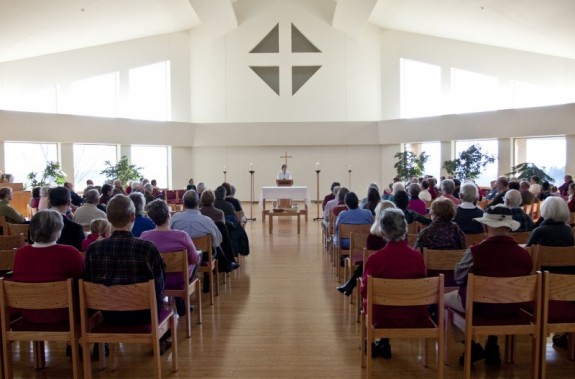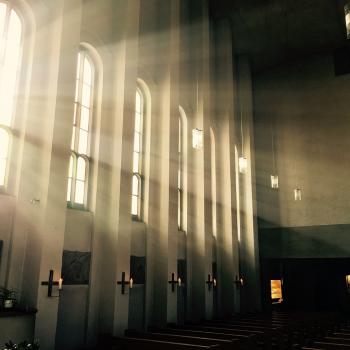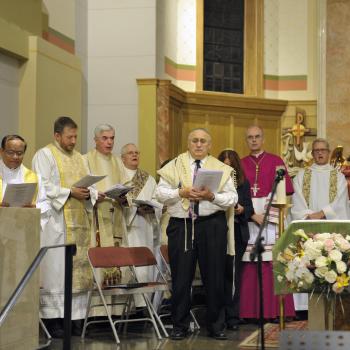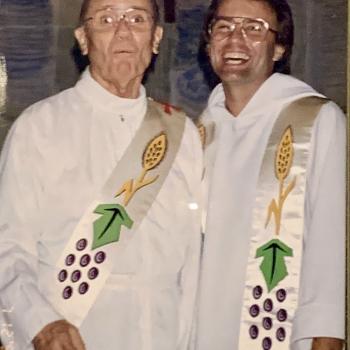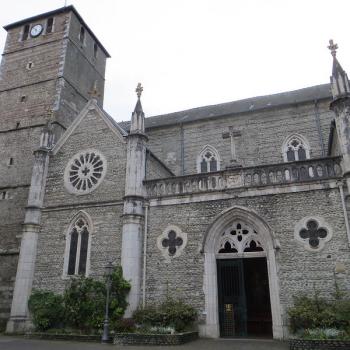This group of disaffected Catholics got a big spread in the Wisconsin State Journal last Sunday:
Alice Jenson’s faith took an irreversible turn six years ago.
It was Nov. 5, 2006, and she was contributing to Mass at St. Joseph’s Catholic Church in Madison as a lay person, reading Bible passages from the lectern.
The same day, Madison Bishop Robert Morlino required all priests to play a recorded message from him explaining his position on three issues state residents would vote on that week, including a ban on same-sex marriage, which he supported.
When the priest hit “play,” Jenson walked out.
“It was the first time I’d ever outwardly gone against what I was raised to follow,” said Jenson, 67.
She found a new religious home at Holy Wisdom Monastery, a former Roman Catholic monastery in the town of Westport, just outside Madison. Its Sunday service, offered by the sisters who live there, retains many elements of a traditional Catholic Mass but diverges in sometimes startling ways.
Women can lead the service and preach the sermon. Gay relationships are warmly embraced. All parishioners, not just Catholics, can consume the communion wine and bread because the service is ecumenical, meaning welcoming of all Christian traditions.
It’s an alternate universe of sorts — what some think a Catholic Mass might look like today if the liberal spirit of Vatican II in the 1960s had taken root and flowered.
“We’re doing what the hierarchical church was afraid to complete,” said Jim Green, a longtime Holy Wisdom parishioner who is gay and describes himself as “a Catholic in exile.”
The service, called Sunday Assembly, is attended by people from many denominational backgrounds but has become especially popular with Catholics displeased with Morlino or church doctrine in general. Membership doubled in five years to 335, and parishioners estimate a majority are Catholics who left their regular parishes.
Detractors say the parishioners strayed too far from Catholicism to warrant the label.
Read more. There’s also an extensive photo gallery from a service and a description of some of what goes on at an “assembly.” Unsurprisingly, the congregation is significantly older; most appear to be in their 60s and 70s.

